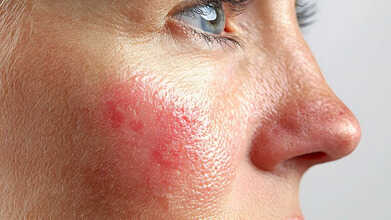- Health Conditions A-Z
- Health & Wellness
- Nutrition
- Fitness
- Health News
- Ayurveda
- Videos
- Medicine A-Z
- Parenting
- Web Stories
Why More Women Are Choosing To Have Kids In Their 30s Even As Fertility Drops?

Credits: Canva
For decades, the ideal age for women to become mothers was firmly rooted in the 20s—a peak period conventionally tied to prime fertility, social norms, and the onset of family life. However, recent information reveals a different picture, more women are increasingly opting to start families when they are in their 30s, although fertility does start decreasing with age. Based on initial data from the Centers for Disease Control and Prevention (CDC), women aged 30 to 34 now have more births than women in their late 20s, a big cultural and demographic change.
This article explores into what's behind this shift—from changing social values and economic considerations to medical innovations and individual empowerment.
In 2016, the CDC also said that the birth rate for women between the ages of 30 and 34 was 103 per 100,000, just barely above the 102 per 100,000 for women between the ages of 25 and 29. The mean age at which American women are giving birth to their first child has also increased to 28, from 26 only a few years earlier. This change signals something more than mere preference; it indicates greater systemic shifts within education, relations, and economic scenarios.
Women aged in their late 20s had the country's peak birth rates for over three decades. That storyline is being revised now. Authorities are attributing the change to a range of interrelated reasons—the primary among them being a decision to wait until marriage to come later in favor of a career or self-realization phase first.
Is Rise of Professional and Financial Independence the Reason?
Women of the millennial and Gen Z generations are entering a job market where education and career mobility are prized—and in many cases, a necessity for financial security. With women becoming more prevalent in positions of leadership within industries and with record-breaking levels of educational attainment, motherhood is no longer viewed as a duty of youth but as a thoughtful life choice.
Waiting until later to have a child offers the time necessary to acquire financial stability, establish a robust professional base, and even eliminate student loans. These actions are important in an environment where living costs and child-rearing—particularly in metropolitan areas—keep increasing.
Deeply connected to this movement is the shifting attitude toward marriage. The first marriage age in America has climbed to 27 for women, a drastic increase over earlier generations. As people delay marriage or pursue alternative relationship structures, the timing of having children has naturally followed suit.
Relationship expert Bill Albert of the National Campaign to Prevent Teen and Unplanned Pregnancy observes that cultural trends, such as the continued decline in teen pregnancies, are part of a larger movement toward thoughtful parenting—where a person is prepared emotionally and economically before assuming the responsibility of bringing a child into the world.
Fertility, Egg Freezing, and Reproductive Health Awareness
Although the social clock might be ticking later, biology hasn't. A healthy woman has approximately a 20% chance of conceiving in any menstrual cycle in her 20s, says the American Congress of Obstetricians and Gynecologists. Fertility, however, starts to decline in the early 30s and declines more steeply after age 37.
Despite this, women are becoming more attuned to these biological facts—and are doing something about it. Egg freezing is becoming a proactive solution, enabling women to freeze their eggs as they work toward other objectives in life. Even though the treatment is expensive (usually more than $10,000, with yearly storage charges), its popularity speaks volumes for the contemporary woman's willingness to seize control of her reproductive destiny.
Infertility Support and Treatment Options
To those who do experience fertility issues, advances in medicine have made family creation more possible than ever. The CDC reports that approximately 11% of women aged 15 to 44 have utilized infertility services, and the Mayo Clinic explains several causes—ranging from ovulation problems and PCOS to endometriosis and cancer treatment complications.
For couples seeking to become pregnant, lifestyle issues such as smoking, weight imbalance, and stress can be factors as well. Health professionals advise women older than 35 to have an evaluation after six months of failing to conceive—six months less than for younger women. With various treatments such as IVF, hormone therapy, and assisted reproductive technologies, increasing numbers of women in their 30s are having successful pregnancies despite the loss of function that comes with age.
Emotional Readiness and the Psychology of Modern Motherhood
Aside from biology and economics, there's the issue of emotional readiness. Women say they feel more grounded, self-assured, and self-aware in their 30s. They've had time to travel, learn, experience the world, and develop a strong sense of self prior to embracing the challenging and life-altering role of motherhood.
This emotional maturity will also feed through into more secure parenting arrangements and more settled family lives. More mature age at motherhood will also include women who have long-term partnership experience and securely structured support networks behind them.
The motherhood narrative is shifting. Women today are rewriting the playbook, using fertility with deliberation and knowledge, and turning conventional wisdom on its head when it comes to the "right" time to have children. While age still plays a huge role in reproductive health, it is no longer the sole factor.
As the world continues to evolve—socially, economically, scientifically, it's bound to happen more and more often that women continue to look on their 30s not as a deadline but as an opening. And as they gain ever-improved access to fertility procedures, as wider society offers their support, as medicine makes breakthrough after breakthrough, they'll have more control over motherhood than ever before to enter into when they want.
What Really Happens In Your Brain During Deep Sleep

Credits: CANVA
Sleep takes up nearly one-third of a person’s life, yet many still wonder what really happens while we rest. Until the mid-20th century, scientists believed sleep was simply a time when the body and brain shut down.
Research now shows that sleep is far from passive, it’s an active, restorative process essential for mental and physical health. As Johns Hopkins neurologist and sleep expert Dr. Mark Wu explains, the brain remains deeply engaged during sleep, performing vital tasks that influence memory, mood, and overall well-being.
The Stages of Sleep
Experts say the human sleep cycle has four main stages that repeat throughout the night. The first three make up non-rapid eye movement (non-REM) sleep, while the fourth is REM sleep, the stage most closely linked with dreaming.
In the first stage of non-REM sleep, the brain and body begin to shift from wakefulness to rest. Brain activity slows, muscles relax, and it is common to experience small, sudden twitches.
During the second stage, the body’s temperature drops slightly, and breathing and heart rate slow. Brainwaves continue to decelerate, though quick bursts of activity may still appear as the brain processes and stores information.
The third stage marks deep sleep, which is the most restorative phase. Here, the body fully relaxes, and the heart rate, breathing, and brain activity reach their lowest levels. This stage is crucial for waking up feeling refreshed and for healing and repair processes throughout the body.
The final stage is REM sleep, which begins about 90 minutes after you fall asleep. It starts short, roughly 10 minutes, but lasts longer with each cycle. During REM, the eyes move rapidly beneath the eyelids, breathing quickens, and heart rate and blood pressure rise to near waking levels. This is when most dreaming occurs. Interestingly, as people age, the amount of REM sleep they experience gradually decreases.
How The Body Regulates Sleep
According to Dr. Wu, two main forces govern sleep: the circadian rhythm and the body’s sleep drive.
The circadian rhythm acts as the body’s internal clock, controlled by a cluster of brain cells that respond to light and darkness. This rhythm triggers the release of melatonin at night and halts it when morning light appears. People who are completely blind often struggle with sleep because their brains can’t register these light cues properly, as per the John Hopkins Study.
The sleep drive works much like hunger. The longer you stay awake, the stronger your urge to sleep becomes. Unlike hunger, though, your body can override your willpower, if exhaustion sets in, it can force sleep to happen, even during daily activities or while driving. In extreme fatigue, brief “microsleep” moments lasting just a few seconds can occur without a person realizing it. However, taking long naps later in the day can reduce this natural sleep pressure, making it harder to fall asleep at night.
Why Sleep Matters For Your Brain
Anyone who has felt mentally sluggish after a sleepless night knows how strongly rest affects the brain. Adequate sleep is key to brain plasticity—the ability to learn, adapt, and form memories. Without it, the brain struggles to retain new information and perform cognitive tasks. Scientists also believe that deep sleep allows the brain to clear out toxins that build up during waking hours, improving long-term brain health.
Sleep impacts far more than the mind. Poor sleep can worsen conditions like depression, high blood pressure, migraines, and even seizures. It weakens the immune system, leaving the body more vulnerable to infection. Metabolism also suffers, as just one night without enough rest can temporarily throw the body into a prediabetic state.
As Dr. Wu explains, “There are countless ways sleep supports health.” From mental clarity to physical repair, the hours we spend asleep are some of the most important for keeping the body and brain functioning at their best.
Can A Rash Be A Sign Of COVID-19? Here’s Everything You Should Know

Credits: canva
When COVID-19 first emerged, it was largely seen as a respiratory illness. Over time, doctors discovered that the virus can affect nearly every major organ, including the heart, kidneys, liver, and skin. While cough, fever, and fatigue remain common signs, some people also develop unusual skin reactions. So, can COVID-19 actually lead to rashes? Here’s what experts have found.
Can COVID-19 Really Cause Rashes?
When COVID-19 first emerged, it was largely seen as a respiratory illness. Over time, doctors discovered that the virus can affect nearly every major organ, including the heart, kidneys, liver, and skin. While cough, fever, and fatigue remain common signs, some people also develop unusual skin reactions. So, can COVID-19 actually lead to rashes? Here’s what experts have found.
What Do COVID-19 Rashes Look Like?
Skin changes linked to COVID-19 are not among the most common symptoms, but they do occur. These rashes may appear on the neck, mouth, or toes and are often caused by inflammation in the body, as per Health website. They can look like flat or raised patches, small round spots, or itchy bumps. In some people, these rashes appear while they’re infected; in others, they show up weeks later.
Why Do These Rashes Occur?
Researchers believe COVID-related rashes are connected to how the virus interacts with the body’s ACE2 receptors, which are found in the skin. When the virus attaches to these receptors, it can trigger the release of inflammatory proteins called cytokines. This inflammation may lead to skin irritation, itchiness, or lesions.
Common Types of COVID-19 Rashes
1. COVID Toes
One of the most recognized skin signs of the virus, “COVID toes,” resembles chilblains, which are cold-weather sores. They appear as pink, red, or purple patches, sometimes with swelling or blistering. This condition is seen more often in younger people and may occur even after other symptoms fade.
2. Hives (Urticaria)
Hives tend to appear suddenly and can spread across any part of the body. They’re itchy, raised, and may come and go within hours or days.
3. Neck Eczema
Some people develop eczema-like rashes on the neck, chest, or trunk during or after COVID-19. The patches can be itchy and vary in color depending on skin tone—pink on lighter skin and brown, gray, or purple on darker skin.
4. Oral Rash
COVID can also cause soreness or peeling inside the mouth or on the lips. The area may feel dry, irritated, or scaly as it heals.
5. Vesicular and Papular Rash
These small, itchy bumps can be filled with fluid (vesicular) or solid (papular). They may appear anywhere on the body and are often linked with ongoing inflammation.
6. Pityriasis Rosea
This condition begins with a single large patch on the chest, back, or abdomen, followed by smaller spots that form a tree-like pattern. Though harmless, it can take several weeks or months to fade.
7. Purpuric or Vasculitic Rash
These rashes appear as dark, bruise-like spots caused by small blood vessel damage under the skin. The color may range from red and purple to brown or black, depending on skin tone.
How Long Do COVID Rashes Last?
The duration depends on the type of rash and the person’s immune response. Most clear up within 2 to 12 days, but some, especially in long COVID cases, may persist for weeks.
How Are COVID Rashes Treated?
Many rashes resolve without any special treatment. To relieve itching or pain, applying mild hydrocortisone cream can help. For more severe or persistent cases, doctors may recommend:
- Antihistamines to reduce itching
- Corticosteroids to lower inflammation
- Blood thinners if the rash is linked to blood vessel irritation
Your doctor will determine the safest treatment depending on the type of rash and overall health.
Disclaimer: This article is for general informational purposes only and should not be considered medical advice. Always consult a qualified healthcare professional before starting, stopping, or changing any medication, or if you experience any unusual symptoms or side effects.
Don't Ignore Your 'Winter Blues', This Is The Biological Reason Behind Winter Depression

(Credit-Canva)
It is a common theme for people to feel down and sad in winter. However, why do shorter, colder days often bring on feelings of loneliness and gloom? There is a biological reason behind it. As the days get shorter, many people feel a dip in energy or mood, but for millions, this signals Seasonal Affective Disorder (SAD), which is a serious form of depression that shouldn't be ignored. Experts from West Virginia University (WVU) caution that SAD symptoms are very similar to major depressive disorder and must be taken seriously.
What Causes SAD?
SAD is much more than just feeling down when it gets dark. It's a genuine type of depression most often seen during the winter months, especially in places far north where daylight is scarce. The basic problem is simple: less natural light hits your eyes. This drop in sunlight confuses your brain's chemistry.
It messes with two vital brain chemicals: serotonin, which helps stabilize your mood, and melatonin, which controls when you sleep and wake up. This lack of light also throws off your body's internal clock, called the circadian rhythm. When all these elements get disrupted, it triggers feelings of low energy and depression.
What Are The Symptoms Of SAD?
SAD involves a cluster of symptoms that persist and significantly interfere with your daily life. The pattern is usually predictable: symptoms begin in the fall, peak in the winter, and disappear by spring. Symptoms often include:
- Feelings of hopelessness.
- Loss of interest in activities you once enjoyed.
- Significant changes in sleep (often sleeping more, or having disrupted sleep).
- Changes in appetite or increased food cravings.
- Difficulty concentrating and persistent fatigue.
The risk of SAD is higher among younger people, women, and those with a family history of mood disorders.
Can You Treat/Prevent Seasonal Affective Disorder?
Because Seasonal Affective Disorder is highly predictable, experts advise starting preventative treatments early in the fall. Seeing a healthcare provider is essential to determine the best plan and timing for treatment, rather than waiting for severe symptoms to appear later in winter.
Light Therapy
This involves sitting daily before a special light box emitting 10,000 lux of bright white light. Doing this for 30 to 60 minutes each morning is the most common and effective treatment for SAD, as it helps correct the imbalance caused by reduced sunlight exposure.
Cognitive-Behavioral Therapy (CBT)
This form of talk therapy teaches you practical skills to manage negative thinking patterns and behaviors linked to depression. CBT helps individuals reframe their outlook on winter and build effective coping mechanisms to reduce the impact of SAD symptoms.
Medication
In certain situations, a healthcare provider may prescribe antidepressant medication to help regulate mood-affecting brain chemicals like serotonin. This is often considered alongside light therapy or counseling, especially if symptoms of depression are severe or persistent.
Lifestyle Changes
Simple daily habits are powerful tools. Regular exercise boosts mood and energy, while maintaining a consistent sleep schedule keeps your body's internal clock stable. These practical steps offer significant support alongside clinical treatments.
© 2024 Bennett, Coleman & Company Limited

